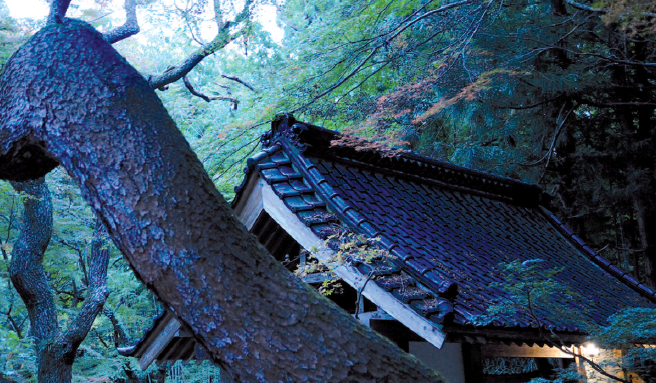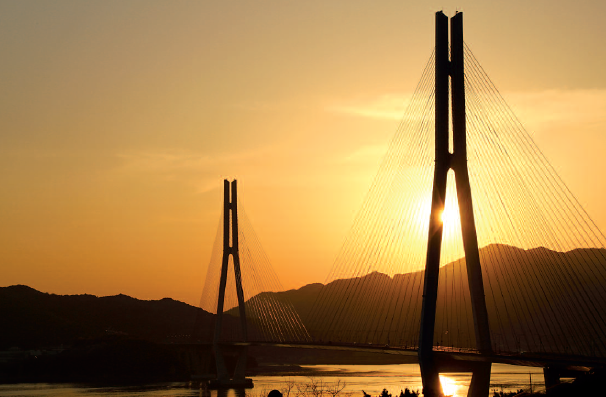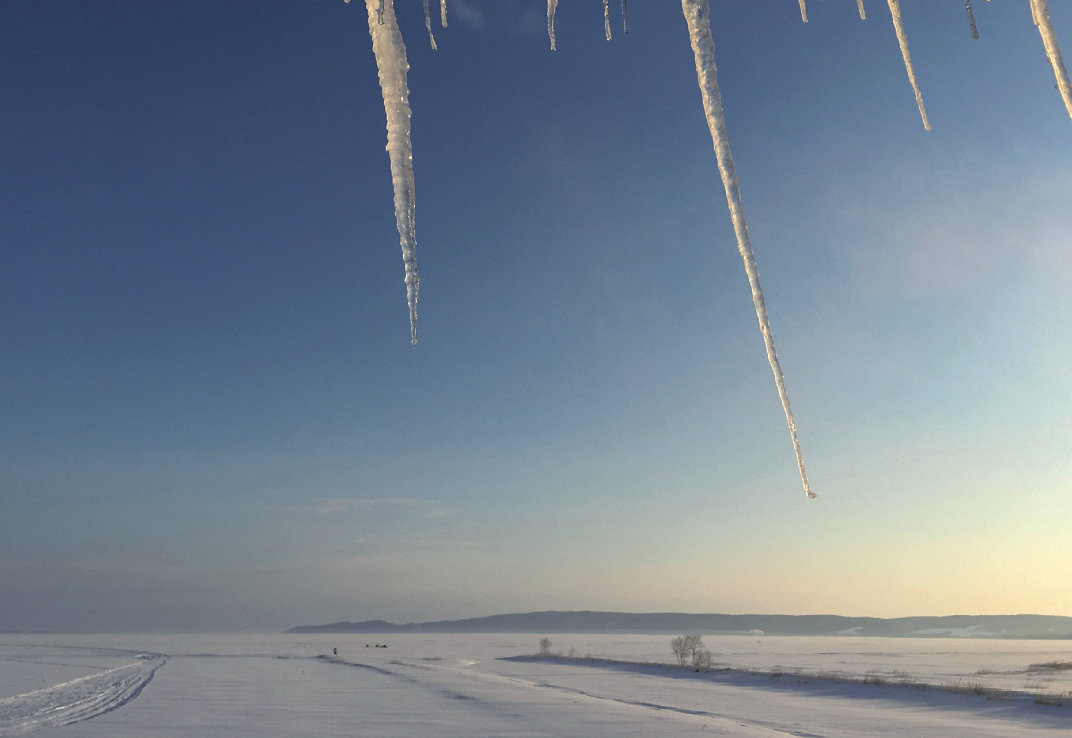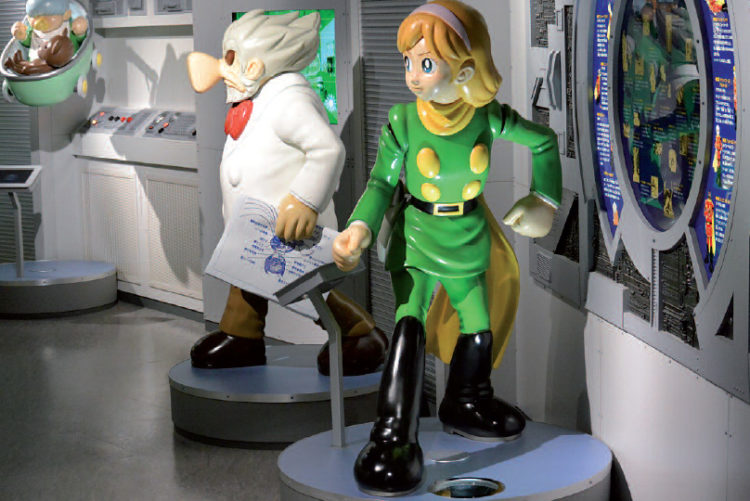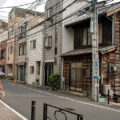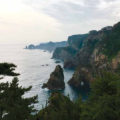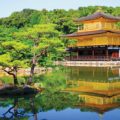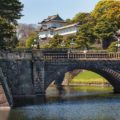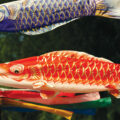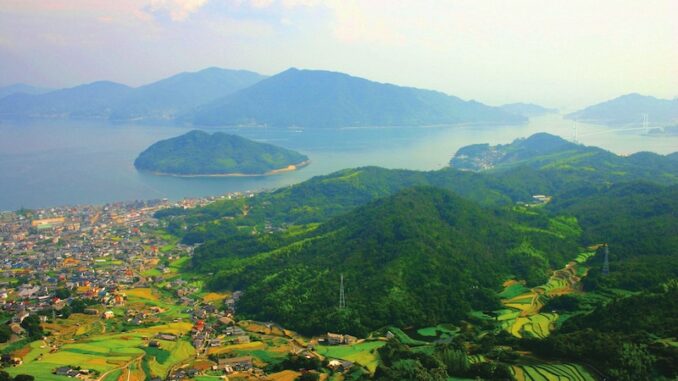
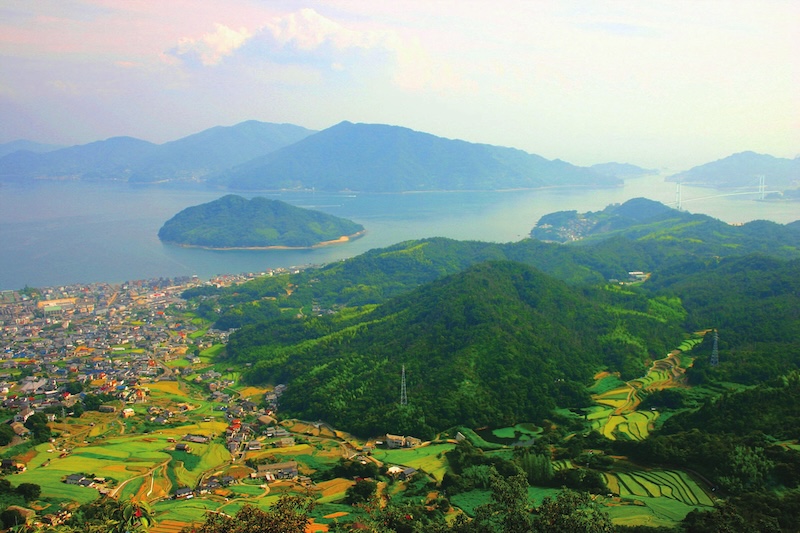
Still spared from overtourism, this region holds many surprises for those who venture there.
As your plane descends towards Kansai airport, be sure to look out the window. You will be rewarded with the remarkable sight of a perfectly rectangular island floating in the sea. This man-made marvel of engineering is the airport you’re about to land at.
Faced with such an astounding sight, you can be forgiven for not paying much attention to the sea the island is set in. But if this first fleeting glimpse of the waters is all you ever see, you will be missing out on one of Japan’s most enchanting secret destinations.
For this is the Seto Naikai, or Seto Inland Sea, which stretches between Honshu, Kyushu and Shikoku – three of Japan’s four largest islands. In 1934 the government designated part of this sea as Japan’s first National Park, ahead of the iconic splendour of Mt. Fuji, the peaks and glacier of the Minami Alps and 32 other stunning sights that later became National Parks.
What makes the Inland Sea so special? One stretch of sea is much the same as another, right? Well, in this case, no. The Seto Naikai is home to a veritable maze of islands – thousands of them. No one knows exactly how many there are, but it’s far too many to count accurately. The Setonaikai National Park area alone is reckoned to encompass some 3000 islands.
Covering over 9,000 square kilometres of coastal and island areas from 11 prefectures, from Osaka to Fukuoka, it is also Japan’s largest National Park.
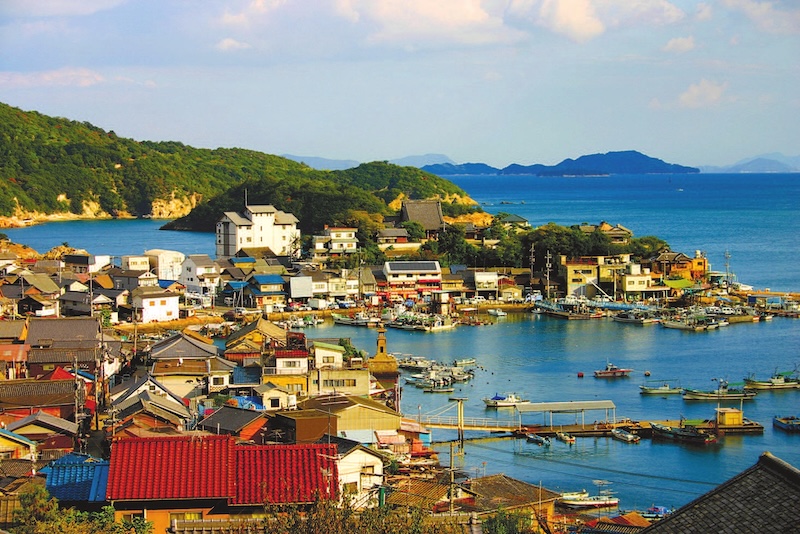
Each island has its own preserved places. / Angeles Marin Cabello for Zoom Japan
The first time you set eyes on this labyrinth of islands it both stirs the heart and tranquilizes the mind. With the placid sea punctuated by the dark green peaks of islands, it resembles a Zen gravel garden on an oceanic scale. In fact, many such gardens in this area are said to replicate views of the islands, with its serene waters and occasional whirlpool.
And just like the garden at Kyoto’s Ryoanji Temple, where you can never see all 15 rocks, no matter which angle you look from, so you can never get a complete view of the islands. As you travel along the coast road, every bend, every slight rise, every kilometre, brings a new angle on the unfolding view, revealing new islands, one after the other, disappearing into the mist like mountains in an ink scroll picture.
“Beautiful scenery that stretches across this large area – there cannot be any greater place in the world. This place will be celebrated as one of the most charming in the world and draw many visitors.” That was the opinion of Baron Von Richtofen (1833-1905), the German geographer and scientist, famous for coining the term, Silk Road.
“The last of old Japan,” US writer Donald Ritchie called it in his book The Inland Sea (1971). But in the same book, Ritchie predicted that in 40 years this way of life would have disappeared, smothered under the deluge of modernization. Was he right? Over the course of this article, we will visit the islands and find out.
The greatest concentration of islands lies between Okayama and Hiroshima, making it the most picturesque part of the Park. So this is the part this article will focus on.
If the collective view of so many islands is breathtaking, setting foot on them is no less entrancing. You find yourself in a realm of citrus groves and rice paddies embosomed in the gentle folds of soft, forest-coated mountains, punctuated by the occasional small hamlet. Forests reach down to the seashore. Beaches of white sand and pine trees ring many islands.
You soon notice that life on these islands moves at a different pace to the mainland. Time itself goes slower, as does the traffic. It’s life lived in the slow lane. Big city rush has no place here.
But it’s not just the slower pace. The whole way of life is different to the metropolis. “I like it here because it’s so quiet,” says university student Kana Iwamoto. “At night all you hear are the crickets. And it’s very safe. We often go out without locking the door.”
At 5.00 p.m., it’s not unusual to hear a message over loudspeakers telling young children to go home. In most places the streets are deserted by nightfall.
Japan’s famed omotenashi (hospitality) still thrives here. If you ask someone the way, chances are they won’t just tell you, but take you there personally, even if it’s out of their way. To the point where a man comes jogging up behind you as you cycle up a hillside, just to make sure you’re taking the right path to the ferry port down below, in Nishinoshima, just across the bay from Hiroshima.
The Inland Sea is often referred to as storm-free sea. Sheltered by the large island of Shikoku for much of its length, it’s rarely troubled by typhoons. Nevertheless, those islands lying outside of Shikoku’s protective shield are still at risk. Itsukushima Shrine on Miyajima Island – a World Heritage Site – has suffered typhoon damage on various occasions.
The generally benign climate is ideal for growing citrus fruits. Since the demise of shipbuilding and other traditional industries, citrus fruits – from mikan tangerines to hybrids only grown here – have become a major activity.
The Setoda area, on Ikuchijima Island, is particularly famous for its citrus fruits. Unmanned roadside fruit stalls are the norm on many of these islands. Just help yourself and leave the money in the honesty box. And this being Japan, no one thinks of taking without paying.
Late evening on Kurahashi Island. A young couple are fishing off the concrete wharf. Fishing is very popular in Japan, with men and women alike. But for these anglers, fishing isn’t a hobby. They’re fishing for their own table: tonight’s dinner, tomorrow’s breakfast, maybe lunch for the whole week if the fish are biting. Fish and the sea are central to life here.
At a beach on Etajima Island, for a small fee you can dig for clams, but only when there’s going to be a full moon. Just bring a sunhat, a rake and a bucket, and you’re set. You then pay for what you’ve caught by weight.
People will be doing this all over these isles on full moon days, as this is when clams appear in great abundance near the surface of the moist sand. Folks in the big city are probably unaware of this. They can buy polystyrene packs of clams in the supermarket any day of the month.
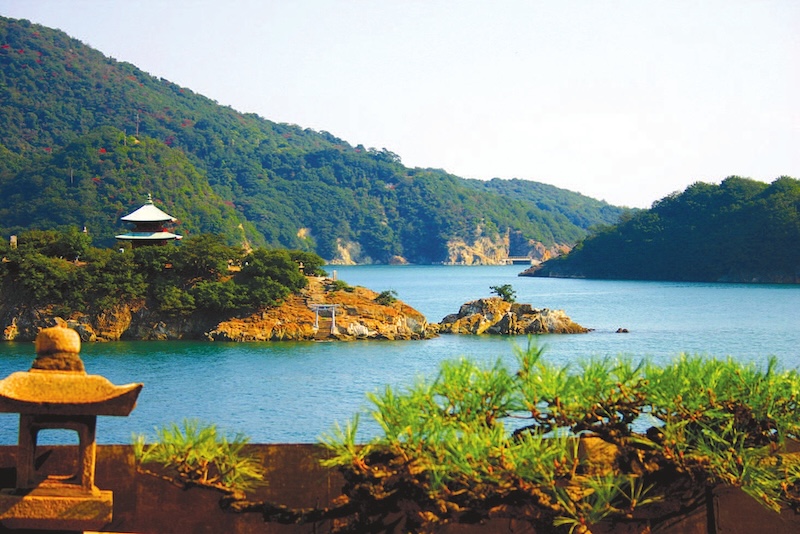
But here on the islands, people’s identity is inextricably connected with their history – not just the history of their island but also natural history, the changing seasons and the effects they have on Nature, and on people. People here are steeped in history.
A stone’s throw from the historic coastal town of Tomo no Ura lies the tiny teardrop of Sansui Island, with its little red pagoda looking perfect against the blue sea and green island. It looks like it was placed there with the consummate skill of a painter adding a final touch of colour that sets off the rest of the picture. The view thus becomes a collaboration between nature and people, a common theme in these islands.
But it’s not just a pretty view. “The positions of the stars and the planets relative to those islands told people when it was time to celebrate the solstice, equinox, October moon and New Year,” says the Buddhist priest of Tomo’s Fukuzenji Temple. Emissaries from Korea and the Netherlands praised the beauty of the town. In 1711, Korean envoy I-pan-on called the sight of Benten “the most beautiful view in Japan.
Tomo has been an important maritime trade centre for over 12 centuries. It’s the only complete Edo-era port in Japan, boasting around 80 Edo-era buildings.
The whole Inland Sea area – connecting the Pacific Ocean to the Sea of Japan and continental Asia – has been a vital trade route for centuries. This long history of welcoming and mingling with visitors from all over Asia has helped fashion the extreme hospitality of the islanders.
Shimokamagari, in the Akinada islands, was another key port on this sea route. In the 16th and 17th centuries Korean envoys would stop here on their way to Edo, their lavish convoys involving scores of ships and hundreds of people. Their visits to Shimokamagari were greeted with sumptuous feasts and great ceremony.
These historic occasions are still celebrated in the Korean Envoys Procession Festival, held on the third Sunday of October.
As for Katsuragahama on Kurahashi Island, it was already the scene for a surprising amount of maritime traffic as far back as the 8th century. Even in Emperor Suiko’s reign (554-628), Kurahashi islanders made the ships that carried Japanese envoys to China and elsewhere, which is why Katsuragahama Beach is a designated site of Historic Interest.
Strolling around the now half-empty streets of former bustling port towns like these, one can’t help wishing that the great ukiyo-e (woodblock print) artist Hiroshige (1797-1858) had produced a series of prints about it – perhaps One Hundred Views of the Inland Sea, akin to his 36 Views of Mt. Fuji, or 100 Famous Views of Edo.
Instead, our imaginations are left to conjure the scenes: the sea crammed with ships constantly coming and going; dimly-lit wooden shops – so busy they open around the clock – their shadowy interiors stacked high with everything from silks and cottons to exotic foodstuffs and ships’ chandlery. In towns like Tomo, some of the shops are still like this.
For centuries the Seto Inland Sea was a bustling trade route, linking Japan with the rest of Asia. Its reputation as a shipping channel was partially responsible for the lack of interest in the area as a tourist destination. To use a modern-day analogy, who would want to go on holiday to Wall Street?
This delayed arrival of tourism has helped preserve the islands’ traditional way of life, sparing it from the over-development and over-tourism that has blighted many destinations around the world. Even today, you can drive round these islands for miles without seeing a multi-storey shopping mall, a garish pachinko parlour or a sky-scraping apartment block.
Thomas Cook (1808-1892), inventor of the guided tour and often called the Father of Modern Tourism, visited these islands in the 19th century and was enchanted by the area’s gorgeous scenery and slow pace. So, if a man of his status and influence loved it, it was only a matter of time before the rest of world caught on. The only mystery is why it took them so long.
The Inland Sea only began opening up to tourism in recent decades, particularly following the completion of the Shimanami Kaido (lit. Island-Wave-Sea Way) in 1999. This spectacular 60-km road and bridge network connects Japan’s main island of Honshu with Shikoku (the fourth-largest island), spanning six smaller islands in the process. It runs from Onomichi in Hiroshima Prefecture, down to Imabari (Ehime Prefecture).
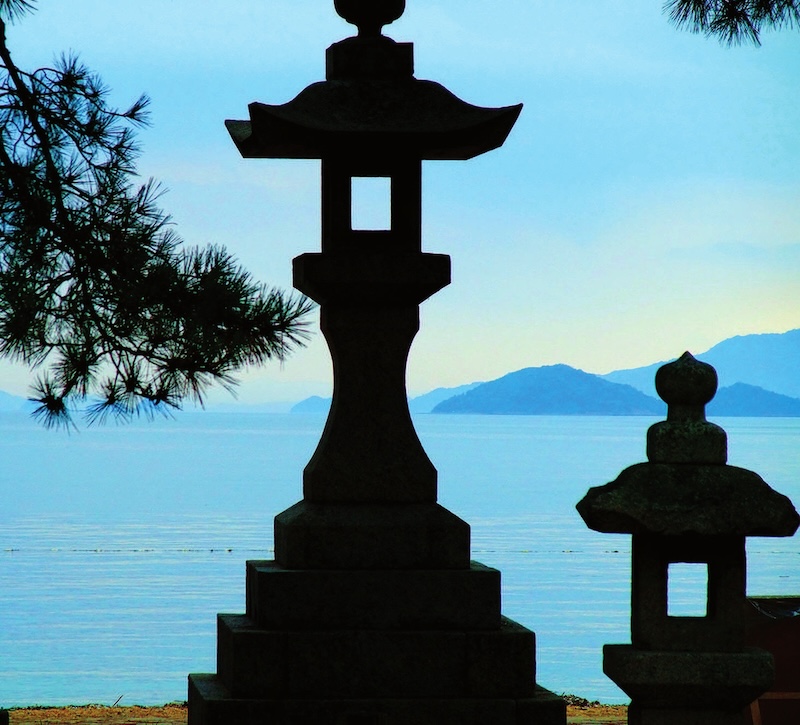
The route was not an immediate success, partly because of the expensive tolls. Then, in Onomichi – the historic coastal port town where the route begins – five former school friends got together, and decided to focus on the fact that all the bridges had cycle lanes. Their aim was to “revitalize the local economy by using Onomichi’s cultural heritage to promote tourism,” says Noriko Kobayashi of DiscoverLink Setouchi (DLS), the local consortium founded by the five men.
The result was the U2 Hotel Cycle, Japan’s first hotel designed for cyclists. Shortly after its opening, CNN ran an article on it (written by yours truly), entitled One of the World’s Most Incredible Bike Routes. As this story generated considerable interest, CNN then sent their cameras there to cover it, and Shimanami Kaido began drawing international attention.
Since then, other areas have followed their example, turning the Inland Sea into a cyclist’s haven. The Tobishima Route, connecting the Akinada Islands, is one example. This 48 km. network of seven bridges spanning seven islands runs from the Akinada Bridge near Kure in Hiroshima Prefecture down to Okamura Island in Shikoku. “Currently it is becoming famous as a cycling course. Guest houses and cafes are also increasing,” says Kenichi Yamamoto of Kure City government’s Tourist Division.
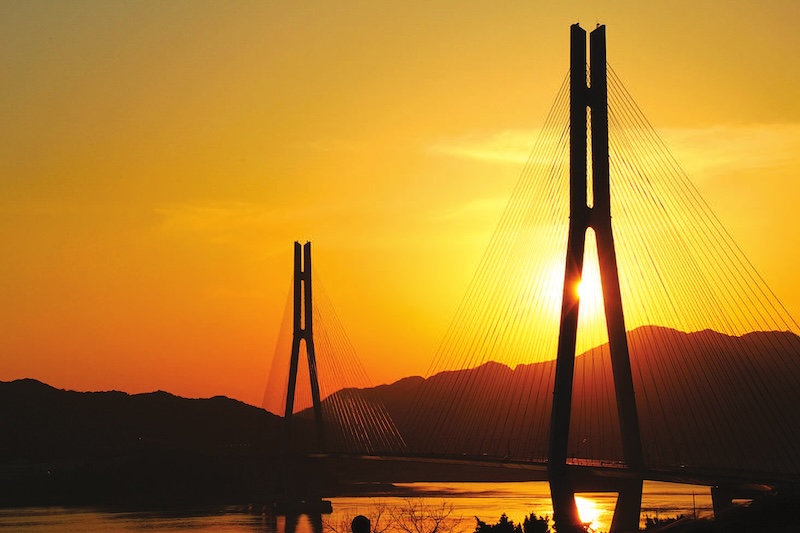
As more and more visitors catch on to the unique attractions of the islands, the islands have been vying to seek ever more innovative ways to visit them. Not just by car or bicycle but also ferries, kayaks and chartered catamaran cruises. The most spectacular of all is to see the islands from the air in a Kodiak seaplane tour.
Departing from the Bella Vista Hotel Marina in Onomichi and from Hiroshima airport, these flights take you soaring over the glorious island scenery at just 700 metres, as the pilot entertains you with a continuous commentary: the islands’ names, points of local interest, regional history. It’s the nearest you’ll ever come to seeing all the islands at once. And the effect is staggering.
Some islands trade on their own rich history to attract visitors. Pirate tourism, for example, is a growing attraction. Back in the 15th century, this busy shipping channel was controlled by the fearsome Murakami clan. Operating from their hideout in Onomichi Channel, they demanded tribute from all passing vessels. The labyrinth of islands and secluded bays made ideal pirate territory. Today, you can visit the Murakami’s Castle on Innoshima Island, while Oshima Island has the fascinating Murakami Suigun Museum.
Other islands offer a “Samurai Experience” where you can experience authentic aspects of Samurai life, witness swordsmith craftsmanship, participate in the warrior tea ceremony, and try on samurai armour.
In contrast, one also finds a surprising amount of contemporary art for such a rural location. Like the museum dedicated to the work of artist Ikuo Hirayama (1930-2009) on Ikuchijima, his birthplace. Hirayama is renowned for his gigantic dreamy paintings of the Silk Road.
Two major art events draw some of the world’s best contemporary artists. One is the Benesse Art Site Naoshima art project, held on Naoshima, Inujima and Teshima islands. According to the organizers, “it’s the world’s first symbiosis between islands and art.” The focus is on the islands and the islanders: “Art is something that brings out the charm of the island… It’s not just about looking at art, it’s about what you can see through art.”
Secondly, there’s the Setouchi Triennale Art Festival, held every three years across many Inland Sea islands. It lasts 100 days and is divided into spring, summer and fall sessions. The Triennale started in 2010 and has become one of Japan’s foremost international art festivals, attracting over a million visitors from Japan and overseas.
This year the Triennale will be held on 17 islands, including Shodoshima, Takamatsu and Oshima. Artists from 37 countries will be taking part.
So, from sublime scenery to seaplanes, medieval pirates to modern art, the islands of the Seto Naikai have finally realized they are sitting on a veritable treasure trove of tourist attractions.
Equally importantly, having come upon this realization rather late, they also realize the importance of protecting this treasure, and of attracting the kind of tourism that won’t upset the harmony between people and nature, serenity and beauty – all the things that made it attractive in the first place.
So far, despite the increasing numbers of visitors, the atmosphere on the islands remains laid-back, the scenery largely unspoiled. Most places are empty in midweek.
But things are changing. “More foreign visitors are visiting the islands, and more young Japanese people are beginning to stay here,” says Kobayashi. “Young people from outside Onomichi are becoming interested in the island lifestyle as a peaceful, low-stress way to live.”
And fittingly, it is Onomichi, the gateway to the Shimanami Kaido, that provides an admirable example of how to open up to visitors while preserving tradition. It is after all a designated Heritage Town. The pioneering U2 Hotel Cycle is housed in a refurbished waterfront warehouse. Other historical buildings, like the two historical manor houses Minato no Yado, have been converted into luxury self-catering accommodation, while LOG (Lantern Onomichi Garden) is a luxury boutique hotel housed in a 60’s apartment complex.
“Renovation is much more expensive than rebuilding,” admits Kobayashi. “But we believe good things should be preserved.”
So, contradictory as it may seem, development and conservation – far from being incompatible – can go hand in hand. Indeed, this coexistence of history and modernity are key to Onomichi’s charm.
Of course, development and conservation inevitably clash sometimes. In Tomo no Ura in 1983, local authorities announced plans to build a 180-metre bridge right across the old port area, which would have obliterated the fabled view. It’s akin to paving over the canals of Venice to facilitate access by car.
Tomo’s plight attracted unprecedented attention from over 45 preservation groups, including the World Monuments Fund and the International Council on Monuments and Sites. Happily, in October 2009, the court made a landmark ruling, blocking the project and recognizing the residents’ right to preserve their townscape. After nearly three decades of intense struggle, in June 2012, incumbent Hiroshima Governor Hidehiko Yuzaki scrapped the bridge project and undertook to preserve the port area.
After all, Hollywood director James Mangold Mangold chose Tomo out of 50 towns across Japan, when scouting for a location for The Wolverine in 2012. For Mangold, Tomo best evoked the old Japan Mangold knew from the films of Yasujiro Ozu. In 2008 anime director Hayao Miyazaki chose the town as the setting for his “Ponyo on the Cliff by the Sea.”
In these art-rich islands, the perfect demonstration of how technology, nature and tradition can work together can be seen in the Shimanami Kaido. The magnificent bridges are works of art in themselves. The cable-stayed Tatara Bridge was the world’s longest cable-stayed bridge, when it was built. Its elegant 220-meter-high steel towers represent the folded wings of a crane. At 4,045 meters long, Kurushima Bridge was the longest suspension bridge in the world until recently. Graceful and elegant, the bridges’ design enhances the surrounding nature, rather than disfiguring it.
But nowhere is the harmony between nature and architecture more stunningly evident than on Miyajima Island. It’s a UNESCO World Heritage site, and one of Japan’s Top 3 Beautiful Places. The giant red torii rising out of the sea and the bright orange Itsukushima Shrine – seemingly floating away on the sparkling blue high tide, against the dark green backdrop of sacred Mt Misen – create a magical aura that even the ever-present hordes of tourists can never dispel.
Little changes on Miyajima. One or two restaurants in the main Omotesando shopping street now stay open till 20.30. But just yards away, in the maple forest that leads up to the slopes of Mt Misen, all is deep darkness and supernatural silence. And atop Mt Misen, there still burns the eternal flame – after being lit by Buddhist monk Kobo Daishi in 806.
It’s a touching symbol of the enduring magic of these islands.
Angeles Marin Cabello & Steve John Powell
To learn more about this topic check out our other articles :
N°152 [FOCUS] Facing the phenomenon of akiya
N°152 [FOCUS] A tough reality to handle
Follow us !

